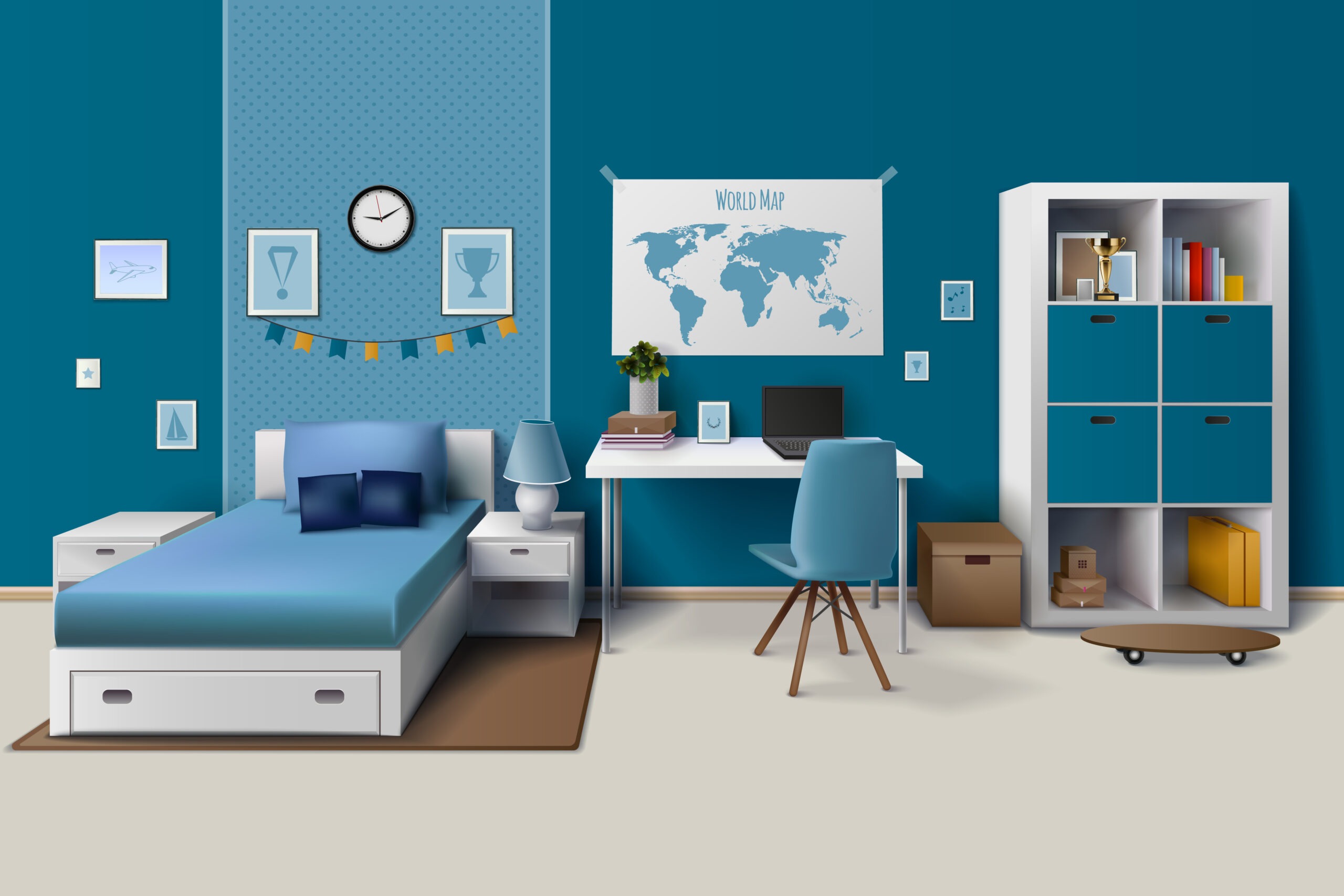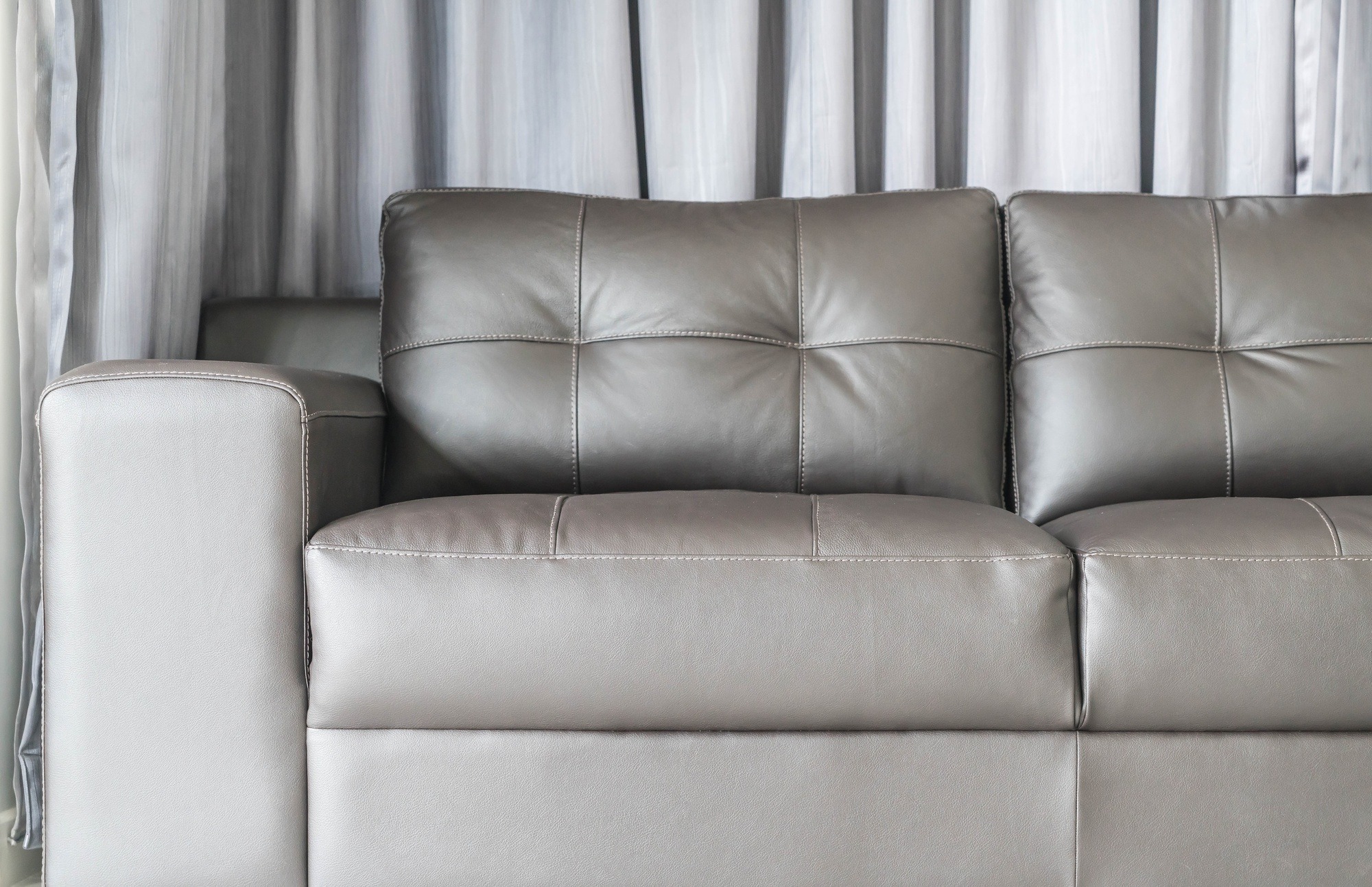Transforming your bedroom into a calming retreat starts with understanding the color at its heart: blue. Renowned for its soothing effects on the mind and body, blue hues can significantly enhance mood and sleep quality. This guide delves into creating a tranquil sanctuary in your bedroom, leveraging the serene qualities of blue, supported by design tips, practical advice, and innovative ideas.
Psychological Effects of Blue
Blue, the color of the sky and sea, is universally adored for its calming presence. Studies suggest that blue tones can lower heart rate and blood pressure, promoting a state of mental relaxation conducive to sleep. Incorporating various shades of blue into your bedroom can help create a peaceful environment, perfect for unwinding after a long day.

Design Themes with Blue
- Coastal Serenity: Achieve this look with soft, pale blues combined with whites and sandy tones. Textures play a key role here—think linen and soft cotton for a breezy, beachside feel. Seashell motifs or artwork can subtly enhance the theme without overwhelming the space.
- Modern Minimalism: Here, darker blues like navy or midnight blue create a bold backdrop that contrasts beautifully with minimalistic furniture and decor. The key is simplicity and letting the color speak for itself, complemented by clean lines and uncluttered spaces.
- Vintage Charm: Soft, washed-out blues paired with antique furniture and floral patterns can evoke a sense of timelessness. Distressed wood and vintage accessories add character and warmth to the bedroom.
Selecting Paint, Fabrics, and Decor
Choosing the right shade of blue paint depends on the desired ambiance. Lighter shades can make a room feel more spacious and airy, while darker shades add depth and sophistication. For fabrics, consider the texture—soft, plush materials in blue can enhance the room’s calming effect. Decorative elements like curtains, rugs, and bed linens in complementary colors (e.g., soft greys, gentle lavenders, or muted greens) can tie the room together harmoniously.
The Role of Lighting
Lighting is crucial in setting the right mood. Natural light during the day can make blues appear more vibrant. In the evening, warm, soft artificial lighting can complement blue tones, creating a cozy and relaxing atmosphere. Smart home technology allows for adjustable mood lighting, enabling the room’s ambiance to evolve from morning to night seamlessly.
Innovative Ideas for a Blue Bedroom
- Sustainable Materials: Opt for eco-friendly paint and decor options. Recycled glass vases or sustainably sourced wooden furniture not only contribute to a calming environment but also ensure your space is environmentally conscious.
- Smart Home Technology: Implement smart lighting that can mimic natural light patterns, enhancing the mood and aiding your sleep cycle.
- Textured Walls: Add depth and interest with textured wallpapers or decorative panels in shades of blue.
- Artistic Ceilings: Consider a soft blue ceiling or a mural that mimics the sky, adding a sense of openness and tranquility to the room.
- Multipurpose Spaces: Incorporate hidden storage or multifunctional furniture to keep the room clutter-free and maintain its peaceful vibe.
Maintenance Tips
To keep your blue bedroom feeling fresh, regular cleaning and decluttering are key. For painted walls, use a gentle, non-abrasive cleaner to avoid fading. Rotate decorative items seasonally to refresh the space’s look and feel without undergoing a full redesign.
Conclusion
A blue bedroom, when executed thoughtfully, can serve as the ultimate calming retreat. By understanding the color’s psychological benefits, selecting the right shades and complementary colors, and incorporating innovative design elements, you can create a space that promotes rest, relaxation, and rejuvenation. Remember, the goal is to balance aesthetics with functionality, ensuring your sanctuary remains both beautiful and practical.
What colors go with blue in a bedroom?
Pairing the right colors with blue in a bedroom can create a harmonious and visually appealing space. Blue is versatile and can work well with various colors depending on the mood and style you want to achieve. Here are some color combinations that complement blue beautifully in a bedroom setting:
- White: White and blue make for a classic, crisp combination. White brightens the room, making it feel more spacious and airy, while blue adds depth and tranquility. This pairing is perfect for creating a clean, coastal feel or a serene, minimalist space.
- Gray: Pairing blue with gray creates a sophisticated and calming palette. Light grays can add a soft, serene touch, while darker grays offer a bold contrast, making the blue pop. This combination is ideal for modern and contemporary bedrooms.
- Beige and Cream: Warm neutrals like beige and cream bring a cozy, inviting feel to a blue bedroom. These colors complement blue’s cool tones, creating a balanced and relaxed environment. This pairing is excellent for a soft, understated look.
- Yellow: For a cheerful and vibrant bedroom, pair blue with yellow. This combination brings a burst of energy and optimism to the space. Lighter yellows with soft blues can create a gentle, airy feel, while bolder yellows with deeper blues can make a strong visual impact.
- Coral and Pink: Soft pinks or vibrant corals add a touch of warmth and playfulness to a blue bedroom. These colors can soften the look of cooler blues or enhance the vibrancy of warmer blues, making the space feel welcoming and lively.
- Green: Blue and green are next to each other on the color wheel, making them a harmonious pair. Light greens can create a refreshing, nature-inspired look, while darker greens can add richness and depth. This combination is perfect for creating a peaceful retreat that echoes the natural world.
- Gold and Brass: Metallic accents in gold or brass add a touch of luxury and elegance to a blue bedroom. These warm metallics stand out against blue, offering a sophisticated contrast that can elevate the space.
- Wood Tones: Incorporating wood elements with blue can bring warmth and texture to the bedroom. Lighter woods can create a soft, natural look, while darker woods offer a more dramatic and cozy feel.
When selecting colors to pair with blue in your bedroom, consider the mood you want to create and the shade of blue you’re working with. Whether you’re aiming for a serene sanctuary, a cozy hideaway, or a vibrant retreat, there’s a color combination that can help you achieve your vision.
Is it better to paint a bedroom dark blue or light blue?
Choosing between dark blue and light blue for a bedroom depends on the atmosphere you want to create, the size and lighting of the room, and personal preferences. Both shades have their unique advantages and can significantly impact the room’s mood and feel. Here are some factors to consider when deciding:
Light Blue
- Atmosphere: Light blue is calming and serene, making it ideal for creating a tranquil retreat. It’s often associated with the sky and water, evoking a sense of openness and tranquility.
- Space Perception: Lighter colors make rooms feel larger and more airy. If your bedroom is small or lacks natural light, light blue can help open up the space and make it feel brighter.
- Versatility: Light blue works well with many decorating styles, from coastal to country and even modern. It’s a safe choice that’s easy to match with various furniture colors and materials.
Dark Blue
- Atmosphere: Dark blue is bold and sophisticated, offering a sense of luxury and depth. It can create a cozy, enveloping feel, making it perfect for a restful, intimate bedroom.
- Space Perception: Dark colors tend to make rooms feel smaller and more intimate. This can be advantageous in larger bedrooms, where you want to create a more snug and cozy atmosphere.
- Style Statement: Dark blue makes a strong style statement and can serve as a stunning backdrop for artwork, furniture, and decorative accents. It’s ideal for creating a focal point or adding drama to the space.
Considerations
- Room Size and Ceiling Height: Light blue can enhance the sense of space in small or low-ceilinged rooms, while dark blue can add richness and warmth to larger, well-lit spaces.
- Natural Light: Rooms with plenty of natural light can handle dark blue walls without feeling too enclosed. In contrast, light blue can maximize the brightness in rooms with limited natural light.
- Purpose of the Room: Consider the mood you want to create. Light blue can be more refreshing and energizing, suitable for a morning person, while dark blue can be calming and grounding, ideal for promoting restful sleep.
- Decor and Accessories: Think about your current or planned decor. Light blue offers a neutral backdrop for a wide range of colors, while dark blue pairs well with bold contrasts and metallic accents for a luxurious look.
Ultimately, the best choice depends on your personal style, the existing characteristics of your bedroom, and the ambiance you aim to achieve. Experimenting with paint swatches on your walls and observing them at different times of day can help you make a decision that you’ll be happy with.
Is dark blue a good color for the bedroom?
Yes, dark blue is an excellent color choice for a bedroom for several reasons:
- Promotes Relaxation and Sleep: Dark blue is often associated with tranquility and calmness, qualities that are conducive to relaxation and a good night’s sleep. The color can help lower heart rate and blood pressure, making it easier to unwind and fall asleep.
- Adds Depth and Sophistication: Dark blue walls can add depth and a touch of sophistication to your bedroom, creating a luxurious and cozy atmosphere. It’s a bold color that serves as a stunning backdrop for artwork, furniture, and accent pieces.
- Versatile and Timeless: Despite its boldness, dark blue is surprisingly versatile and can complement a wide range of decorating styles, from modern and contemporary to traditional and nautical. It’s a timeless color that doesn’t go out of style, ensuring your bedroom remains chic and elegant for years to come.
- Enhances Mood: Darker shades of blue can evoke feelings of security and stability, contributing to a peaceful and comforting environment. It’s an ideal choice for creating a serene sanctuary where you can escape the stresses of daily life.
- Pairs Well with Other Colors: Dark blue works beautifully with a variety of other colors, including light neutrals like white, cream, and gray, as well as bold hues and metallic accents. This versatility allows for creative and personalized bedroom designs.
However, it’s important to consider the following when using dark blue in a bedroom:
- Room Size and Natural Light: Dark colors can make a small room feel smaller or a poorly lit room feel dimmer. If your bedroom is small or lacks natural light, balance dark blue walls with lighter-colored furniture, bedding, and accessories, or use ample artificial lighting to keep the space inviting.
- Accent Walls: If painting the entire room dark blue feels overwhelming, consider creating an accent wall. This can add a splash of color and character without darkening the room too much.
- Textures and Layers: Incorporating various textures and layers can prevent a dark blue room from feeling flat. Use rugs, curtains, and bedding in different materials to add depth and interest to the space.
In summary, dark blue can be a fantastic choice for a bedroom, offering both aesthetic and psychological benefits. With the right balance and accents, it can create a sophisticated, restful retreat that promotes relaxation and sleep.
What color bedding goes with light blue walls?
With light blue walls offering a serene and calming backdrop, you have a versatile starting point that can pair well with a wide range of bedding colors. The right choice depends on the mood you want to create and your personal style. Here are some color suggestions for bedding that complements light blue walls beautifully:
- White: White bedding can create a fresh, airy feel, enhancing the light and tranquil atmosphere set by light blue walls. It’s a classic combination that evokes a clean, minimalist aesthetic.
- Soft Grays: Soft gray bedding can add a sophisticated touch to a light blue bedroom, creating a subtle contrast that’s both modern and understated. This combo works well for creating a peaceful, neutral space.
- Navy or Dark Blue: For a bolder look, consider navy or another dark blue shade. This can add depth and interest to the room, creating a dynamic contrast against the light blue walls without overwhelming the space.
- Pastel Colors: Soft pastel tones, such as blush pink, lavender, or mint, can complement light blue walls for a gentle, harmonious look. These colors can enhance the room’s serene vibe, making it perfect for relaxation.
- Beige and Cream: Warm neutrals like beige or cream offer a cozy and inviting contrast to cool light blue walls. This combination creates a balanced and welcoming space, perfect for unwinding.
- Coral or Salmon: For a splash of warmth and vibrancy, consider coral or salmon. These colors can introduce a lively contrast to light blue walls, infusing the bedroom with energy and personality.
- Yellow: Yellow bedding can brighten the room and inject a dose of cheerfulness, creating a sunny contrast with the calmness of light blue walls. Opt for soft, buttery yellows for a subtle look or bold, sunny shades for more impact.
- Metallic Accents: Adding bedding with metallic accents, such as gold or silver, can introduce a touch of luxury and sophistication to the bedroom. These accents work especially well with light blue walls, adding a modern, glamorous feel.
When selecting bedding for light blue walls, consider the overall theme and mood you want to achieve in your bedroom. Also, think about textures and patterns, as these can add depth and interest to your bedding choice, further enhancing the room’s decor. Mixing and matching different textures and shades within your chosen color palette can create a layered, inviting look that complements the calming nature of light blue walls.


